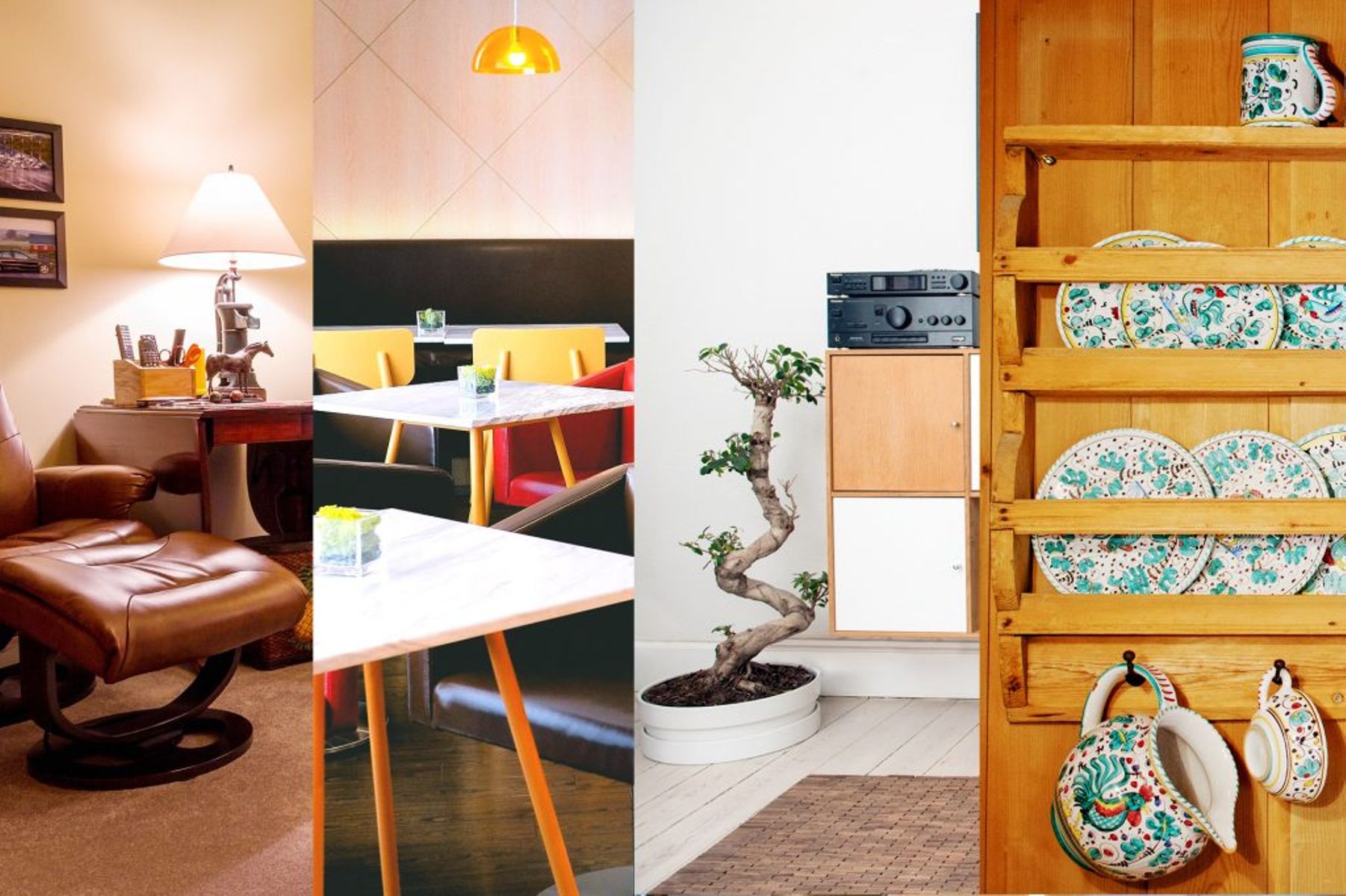Design trends over the decades
14 May 2018
Do you step into your home after work each day and simultaneously step into the ’60s? Lucky you. Or do you step into a decade you don’t think has ever existed and probably should never exist, if your inner-interior designer has anything to say about it. Well, here is a quick run down of the decades that have been, and what you can take from these when deciding on your next furniture purchase or planning a total overhaul of your home’s design.
The 1950’s
What made the ’50s special? Apart from the music and the cars, there was the growing prosperity following the end of WW2. While the sticklers were worried about the cold war and building bomb shelters in their backyards, others were spending their growing wealth on some of the most iconic furniture of the 20th century.
The Eames Chair and Ottoman (above) is synonymous with furniture design, whether that is a good thing or not is up to you. Modern design at this point was at a natal stage, where the modernist ideals of function over form led to intentionally-simplistic furniture and interior design, while simultaneously opening the way for an explosion of experimentation and colour that would define the ’60s.
Design tip: a single, strategically placed, quality piece of ’50s furniture can often dictate the feel of a room. Juxtapose the rich wooden textures of a 1950’s Danish dining table against the stark backdrop of a white wall for a dramatic effect where the lines of form/function can be effectively blurred.
The 1960’s
Ask 10 people what decade they wish they could have been 20-years-old during and most will undoubtedly say the ‘60s. One of the most tumultuous but exciting decades, the ‘60s came to life not only in the music and civil rights movements that defined the decade, but also through design.
‘60s furniture and design can be the most ostentatious and as such the hardest to marry together with modern homes. Styling a home entirely in ‘60s colours, furniture and textures can end up creating an overpowering and sickly experience for those living in and visiting the home. This almost harried and excitable design ethos, like an overly intelligent dog that has just heard the word W-A-L-K spelled out, is best avoided and instead, only the best of the ‘60s should be picked out.
Design tip: modern design today (as above) often leans on and marries the simplicity and strong lines that dominated the ‘60s with the rich, heavy and often bold colours that exploded onto the design scene during this time. One of the most popular trends today is to mirror this marriage in a way that promotes the timelessness of this mid-20th century design ethos.
The 1970’s
When you think of 1970’s interior design, do you think of the Brady Bunch home? Does a shudder run through your spine as you cringe in memory of not only that avocado-inspired kitchen but all the smiling?
The ‘70s had their hits and misses, the misses often outweighing the hits. But when they did it right, it was good! Wood panelling was used to great effect during this decade, as both interior design and architecture was imbued with a strong sense of solidity and weight, suggesting a sense of permanence and unity.
Design tip: Now, there is nothing necessarily wrong with avocado. If Bewitched, The Brady Bunch, and even Sesame Street were loving the colour, they may have been onto something. Consider how the above side cabinet would look with the rich blue drawers replaced in avocado! Any colour is fine so long as it is isolated, used sparingly and placed in a well-designed and considered context.
The 1980’s
The ’80s was as confused in its design as it was in its music. The counter-cultural push of the previous two decades was often met by either a strong sense of traditionalism, made manifest by way of a lot of pastels and floral patterns (think of the houses in Drop Dead Fred, Ferris Bueller’s Day Off or Labyrinth) or starkly modern, even exaggerated in a pseudo sci-fi way, as the digital revolution peeked its nose around the corner.
Design tip: the ‘80s are definitely not dead. While the floral wallpaper might be out, and rightly so, the idea of minimalism and how it manifested itself through very strong lines and monotone colour schemes is something that is still relevant today. Want to decorate your place like Richard Gere in American Gigolo? It probably wouldn’t stand out too badly.
The 1990’s
Minimalism won out following the economic downturn that occurred in the late ‘80s. This was for both the benefit and detriment of home owners as imagination and daring was sometimes left at the front door, while cream, pastels and comfy couches were allowed to make their way inside without a single question asked.
“Remember the ‘90s?” has become the favourite go-to for anyone seeking a break from today’s politics, and rightly so, not just because of today’s politics but because colour that hadn’t been seen since the ’60s, and some colours that we hadn’t seen before, were let back into design in the ‘90s.
Design tip: the use of strong, angular and bold graphics in the ‘90s as well as bright fluoro colours used in careless abandon is something that should be celebrated and even replicated today. Cultural references (above) are also a possibility, and sure to start an hour-long trip down memory lane with visitors.
Remember, your home’s construction and architectural style are the canvas on which you can paint your interior design tastes. Don’t feel you can only put an Eames Lounge and Ottoman in your 1950s home, as a contrast between styles and time periods can be an effective and arresting styling choice.
Source - realestateview.com.au


